 With the temperature dropping, it's time to find someone to keep you warm. Find your hookups with our online dating guide!
With the temperature dropping, it's time to find someone to keep you warm. Find your hookups with our online dating guide!
History Collection
- Documentary
- 2008
- Buy the DVD
All photos © Warner Bros.
Reviewed by Jason Zingale
()
ature has never looked quite as amazing or interesting as in BBC’s “Planet Earth” miniseries, so it makes sense that Warner Bros. would use the award-winning documentary to headline the "Natural History Collection,” a 17-disc mega box set hitting store shelves in celebration of Earth Day. Comprised of four BBC documentaries (all narrated by the incomparable David Attenborough), the box set may be nothing more than a recycling of previously released material, but for diehard nature fans that haven't yet invested in one of the many "Planet Earth" DVD releases, this is one deal that's difficult to pass up.
Shot over the course of five years, across 200 different locations, and reportedly costing $25 million to complete, “Planet Earth” is perhaps the greatest nature documentary ever made. Even someone like me, who hasn’t seen many nature films (let alone one I actually enjoyed), can appreciate the once-in-a-lifetime experience that the miniseries delivers. Divided into 11 episodes (each focusing on a different geographical region), “Planet Earth” displays our world like we’ve never seen before – from the rarest creatures to the most jaw-dropping locations.
In the first installment (“From Pole to Pole”), Attenborough takes the audience through an introductory course of the planet’s wonders, all while delivering some of the series’ finest moments, including a lighting-fast great white shark attack that’s been slowed down to 40 seconds, to an overhead tracking shot of a wild dog hunt. The latter is captured using a military-developed heligimbal (a motion-stabilized helicopter camera mount) that allows the “Planet Earth” crew to follow the entire hunt from the sky. This technology is used to an even greater extent later on in the series when we’re treated to aerial views of migrating caribou (3 million in number) traveling 2000 miles across northern Canada. It’s a sight that most humans will never see again, and it’s absolutely breathtaking to say the least. Other filming methods employed include an advanced time-lapse system that is so realistic you’d swear it’s fake, and a hot air balloon that’s been rigged to allow a brave cameraman to capture sweeping, 360-degree shots of seasonal forests.
Of course, not every minute of “Planet Earth” is as enjoyable as the aforementioned examples. In fact, the series as a whole is relatively hit and miss, but thanks to some truly amazing segments, it’s easy to forgive its shortcomings. Even something as brief as a 30-second glimpse at the mating dance of a New Guinea bird of paradise can save an entire episode, and it’s not just because it’s so unexpectedly humorous. The sheer determination that goes into recording such an event (this particular cameraman spent more than two months trying to document a single bird’s behavior) is interesting in its own right; so much so that each episode is followed by a short making-of (“Planet Earth: Diaries”) that delves into the hardships of completing an installment’s most challenging segment.
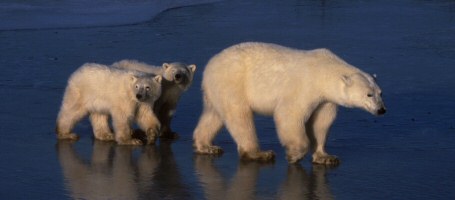
What’s perhaps most amazing about the series, however, is that it manages to explore the planet without once striking up a discussion about the environment. Unfortunately, someone over at the BBC felt it necessary to include something about global warming, and it comes in the form of three additional episodes dubbed “Planet Earth: The Future.” As you can imagine, they’re all pretty boring, and aside from sharing more footage of endangered species, they actually dampen the spirit of the series. “Planet Earth” is supposed to be about celebrating the planet, not finding someone to blame it’s problems on, and the producers would have been better off saving that particular discussion for another day.
So if “Planet Earth” is the one-stop shop for all things Mother Nature, what exactly is the point of pairing it with three more like-minded miniseries? Quite simply, because it doesn’t even come close to covering every species of underwater life form, mammal or bird on this planet. Neither do the accompanying documentaries (“The Blue Planet,” “The Life of Mammals” and “The Life of Birds”), but nature fanatics will still find plenty to enjoy throughout the additional 16 hours of footage. “The Life of Mammals,” in particular, succeeds as a worthy complement simply because it doesn’t dwell on subjects already examined in “Planet Earth,” while “The Blue Planet” (despite including a very cool episode on the creatures of the deep sea) is several shades of boring. I mean, how many different species of whales, dolphins and tunafish can there really be? Apparently, lots. So many, in fact, that you’ll probably be sick and tired of hearing about them by the fourth episode.
Then again, that’s to be expected from a 17-disc box set of this magnitude. Running over 40 hours in length, the “BBC Natural History Collection” isn’t for casual fans of nature films, but for those who would gladly pay for an entire channel dedicated to the stuff. While “Planet Earth” is something that anyone can enjoy – heck, it should even be required viewing for every grade school around the world – the appeal of the other three miniseries depends completely on your interest in the subject matter. It may sound like overkill, but as long as undiscovered species and geographic locations remain hidden from the human eye, someone will be there to capture them on film, and I can’t think of anyone better for the job than the BBC.
Special Features: Since Warner Bros. is just reissuing these titles, there aren’t any new extras included, but the ones that do appear are worth checking out. Aside from the aforementioned bonus material on “Planet Earth," “The Blue Planet” and “The Life of Mammals” also include short making-of featurettes for each episode, as well as photo galleries and fact files. Additionally, “The Blue Planet” features four additional “episodes” – two of which (“Amazon Abyss” and “Dive to Shark Volcano”) are so good that they should have been included in the original series.
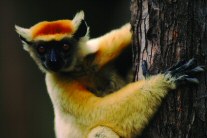 |
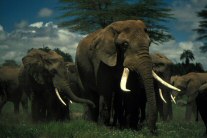 |
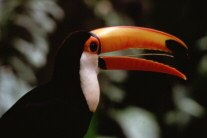 |
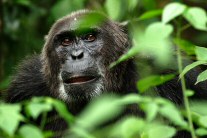 |
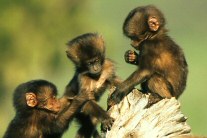 |
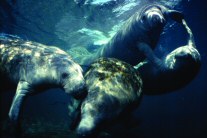 |
You can follow us on Twitter and Facebook for content updates. Also, sign up for our email list for weekly updates and check us out on Google+ as well.











